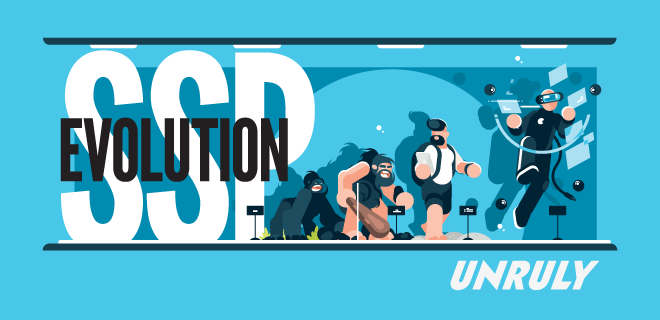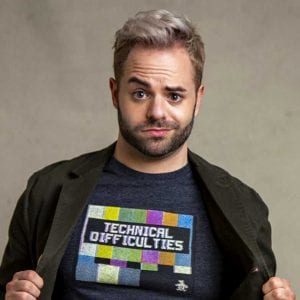
CTV is the media darling of the moment. According to eMarketer, 53% of video viewing on all devices is on CTVs. But like anything that becomes successful, there are a lot of bad actors that start to appear, trying to get a piece of the advertising pie.
Who you partner with for monetizing your video inventory across screens can mean the difference between success and failure for publishers. With your CTV inventory, you want a partner who can also fix issues around brand safety, fraud, frequency, ad pods, and publisher yields. This is especially true when CTV feels more like TV for viewing audiences.
Take the flourishing partnership between TMB (Trusted Media Brands) and Unruly, a leading CTV and video advertising platform. TMB selected Unruly as one of its preferred SSP partners following TMB’s acquisition last year of Jukin Media, a top streaming and social video company.
Following the acquisition, TMB found itself with more than two billion minutes of video watched per month across its brands like FailArmy, Taste of Home, Family Handyman, Reader’s Digest, People Are Awesome, The Pet Collective, and WeatherSpy, and the company was seeking partners to help it more efficiently monetize its inventory.
We spoke with Mike Richter, Vice President of Global Revenue Operations for CTV and Digital at TMB, to learn more about the importance of working with the right CTV partner, addressing programmatic concerns, and what’s next on the horizon for CTV.
Emily Dalamangas: Trusted Media Brands’ acquisition of Jukin Media last August quadrupled its monthly audience reach. How has this extended reach opened more opportunities for brands looking to advertise on CTV or OTT?
Mike Richter: Jukin Media didn’t have a strong digital offering, and TMB didn’t really have a CTV offering at all. So, the combination of efforts has greatly opened the door for both entities to have more access to users across newer platforms that they’ve never touched on before in a detailed way.
It is exciting to see and to be able to drive growth and investment in new original programming, platforms, app distribution, and possibly new website distribution opportunities. There are tons of ways with the new collective audience to go to market with a very strong value proposition for agencies and buyers worldwide.
ED: Unruly was selected by Trusted Media Brands as a preferred SSP partner. How does partnering with Unruly fit into Trusted Media Brands’ future plans in the CTV and OTT space?
MR: Across the board, Unruly is a company that TMB likes to partner with. That’s because a strong supply-side partnership not only lets us properly merchandise our inventory but also allows us to be exposed to a multitude of buying angles for CTV and OTT.
Advertisers need brand safety, and at the same time, we are trying to attract viewers to our video content. We want viewers to stay in the content we’re delivering and if the content doesn’t fit within their values, they will go away from the site. Publishers are constantly focused on the quality of the content from a programming perspective and also on the nature of the ads served. And that quality assurance for both ads and content is key in choosing an SSP partner.
Unruly has proven to be one of those partners that we don’t have to police and can trust with the demand they are sourcing through their sales efforts—unruly hits all the spots. We can be confident in the demand they are trafficking our way as well as how they are representing themselves in the market as a steward of our content inventory.
ED: It can be challenging for media companies to find the right strategic and creative content partner for their CTV and OTT needs. What criteria should publishers be looking for in a successful partnership?
MR: It’s well-known that most of the video content you see is not built by those channels. It is built by various studios and syndicated because the amount of money it takes to create shows is very expensive. To get any decently supplied CTV or OTT channel off the ground, you need hundreds of hours of content, and it should be a mix of new, syndicated, and older content. At TMB, we’re one of the few FAST channel operators that produce our own original half-hour series, but we wouldn’t attempt to program an entire schedule only with originals. It needs to be a mix.
To get any decently supplied CTV or OTT channel off the ground, you need hundreds of hours of content, and it should be a mix of new, syndicated, and older content.
There is tons of valuable content out there that has been on the shelves for years. Just because it wasn’t made this year doesn’t mean it’s not valuable to a user. I’m constantly re-binging shows that have been off the air for decades, and there is opportunity in content stored inside vaults that are barely being tapped into.
Figure out the semantic nature of the channel you’re programming for and the right experience for the viewer that’s going to keep them engaged. You want the viewer to keep wanting more of the experience to build on the publisher’s revenue generation, which lets the publisher either license or buy syndicated content or create content on its own. It creates more or less a circle of life that we all know within this industry.
ED: According to eMarketer, 70% of CTV is purchased programmatically. But with, with programmatic, ad ops and brands have concerns about brand safety, data privacy, and ad fraud. How are CTV platforms addressing these concerns, and in what areas can they do better?
MR: For those that are truly concerned about brand safety, data privacy, and ad fraud, take a look at who you’re buying from. Is anyone who pops up hawking TV inventory like a cheap watch on the street? You must take ownership of your verification and make sure what you’re buying is accurate.
At TMB, we focus on ensuring that our content is delivered across platforms we can trust with real viewers and real distribution points. So, we can guarantee an advertiser that if you go through any of our preferred partners, like Unruly, and verify the supply path optimization, there’s nothing to be concerned about, which means doing the homework of your programmatic buys.
We can do better if we are more open and transparent as an industry. We can address brand concerns about programmatic by taking steps to provide a positive experience for both users and buyers equally; one is not more important than the other. But we must be willing to ask those vetting questions of our partners, and buyers have to be ready to stop using untrustworthy platforms because when you stop giving them the money, they will dry up.
ED: CTV has rapidly evolved with consumer adoption and platform launches. Can this rapid rise be sustained, and what CTV trends do you foresee in the next six months, one year, and beyond?
MR: CTV will continue to evolve as users demand more control in their experience. A few years ago, we went very fast to the diversification of delivery systems, and we’re now circling back to unification. Users who wanted to go a la carte now realize they like a group package.
When we look at the development of delivery systems for video, we had black and white, color, cable, and satellite TV. CTV is still called CTV because it’s new, but soon it will be called TV. Eventually, there will be no screens; it’ll all be virtual. I know that sounds crazy, but the reality is that’s where we’re heading. For example, glasses are not sustainable, but it may be some sort of implant or lens on the eye.
All that means is we’ll likely have to change the way we’re buying and consuming content. Right now, we’re going through unification but give it a year or two, and we’ll be going back to diversification because some new way of watching TV will change. We need to keep up with the technology development, the desires of the audiences, and the value for the buyers because, without those elements, none of this will exist.